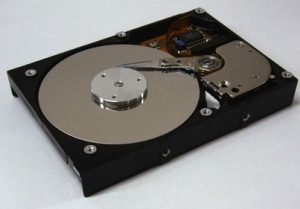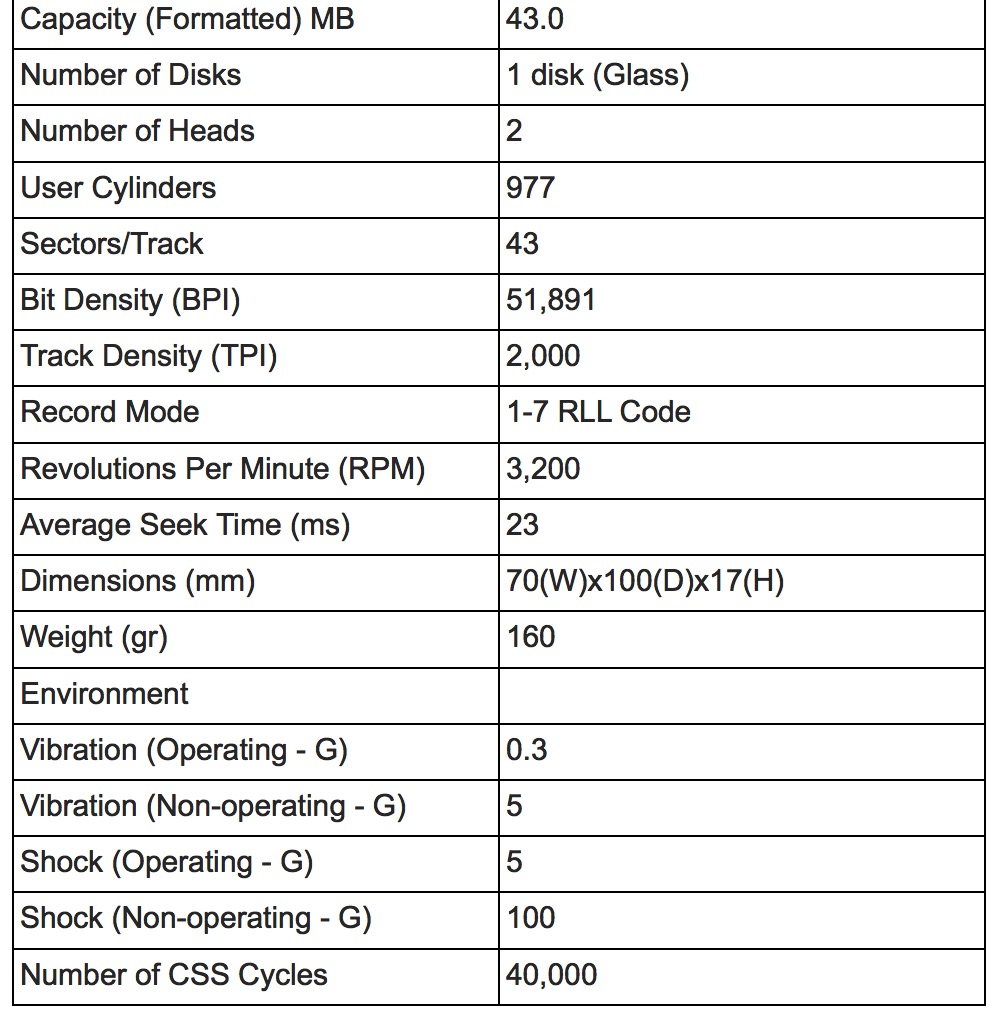History (1990): First Glass Disk
Toshiba MK1122FC
This is a Press Release edited by StorageNewsletter.com on July 20, 2018 at 2:06 pmThis article comes from WikiFoundry, Inc.
1990: Toshiba MK1122FC
First glass disk

Why it’s important
The previous disk material, aluminum, is too soft to take the all the physical abuse in the mobile market. Aluminum’s replacement by glass further enabled the growth of HDD’s into the mobile market. Hoya provided the first such media.
Discussion
Development Outline:
In October, 1989, Toshiba started developing HDDs which featured compact design with high capacity, high performance, high power-saving and high environmental resistance for mobile office automation equipment, especially for Note PC.
At that time, Conner Peripherals had already announced a 2.5″ HDD with a single aluminum disk and it was already in the market; therefore, we would set our goal as developing a 40MB+ HDD with a single disk.
In order to achieve a high capacity HDD, it was essential to use over 100Mb per square inch high areal density. We matched up with a 50 turn thin-film head and glass media with low-roughness and smooth surface to implement 0.1MUMUm head flying height, and it worked.
In November 1989, Yamaha, Hoya and Toshiba decided to co-develop the head and media combination. When introducing glass media to the market, there was fear that the disk might be broken while handling, assembling and testing using a punch test, so we conducted a significantly demanding crack check test by using engineering samples and functional samples. As a result, there was no breakage found.
Rather, the conclusion told us that glass media was several times stronger than aluminum media in reaction to scratch at head collision in non-operating conditions. Thus, shock resistance performance level was beyond our expected spec of 100G, which proved glass media’s durability is beneficial and afterward, the result became a selling point for the glass media HDD. But then, since glass media had a smaller coefficient thermal expansion than aluminum media, we had to change the spindle motor material from aluminum to stainless steel to keep deformation caused by temperature change at a minimum.
We focused on the following to ensure the machine credibility of the HDD:
- Anti HDI (Head Disk Interference)
- CSS (Contact Start Stop)
- Durability
- Anti-Stiction
- Anti Corrosion
SiO2, the unique Hoya glass media overcoat, worked so well to ensure the above characteristic features. The only drawback of glass media was that as a challenge inherent in glass media, the edge of outer periphery became ‘ski-jump’ looking configuration; therefore, the head glide property would deteriorate near the outer edge. In order to reduce the ‘ski-jump’ effect, polishing pad and process characteristics when fabricating the glass substrate were improved, and processing conditions were optimized. In addition to the use of glass media, this device adopted the most advanced technology such as, a 50-turn-coil high output thin-film head, sensorless spindle motor, Nd magnet VCM, 1-7 RLL code recording mode, digital sector servo method, etc.
Now, let me summarize above-mentioned history briefly [1].
1. 1989/10 Starts development design
2. 1990/3 Fundamental experiment begins by using functional samples
3. 1990/8 Device validation begins with functional samples
4. 1991/1 Qualification process begins with commercial samples and shipping to specific users
5. 1991/4 Volume production begins
As you see, Toshiba became a leader in the development of high-capacity 2.5-inch HDD products in rapid-fire succession by upgrading areal density and increasing the number of installed glass disks.
Production History on 2.5″ HDD with Glass Media and New Model
- April 1991
- 40MB (1 disk) Model Volume Production Began
- Approx. 15,000/Month
- October 1991
- 80MB (2 disks) Model Volume Production Began
- Approx. 20,000/Month including other models
- March 1992
- 131MB (2 disks) Model Volume Production Began
- Approx. 60,000/Month including other models
- October 1992
- 213MB (2 disks) Model Volume Production Began
- Approx. 70,000/Month including other models
- May 1993
- 340MB (3 disks) Model Volume Production Began
- Approx. 100,000/Month including other models
- December 1993
- 520MB (4 disks) Model Volume Production Began
- Approx.150,000/Month including other models
- September 1994
- 704MB (5 disks) Model Volume Production Began
- Approx. 230,000/Month including other models
Shipment Growth
FY Shipped Volume, Main Customers
- 1991 200,000 PCs Internal Use, Domestic PC Maker
- 1992 780,000, PCs Domestic PC Maker
- 1993 11450,000, PCs Domestic, Taiwanese and US PC Maker
- 1994 2,230,000, PCs All Over the World
Reference
Main specs on the first 2.5″HDD loaded with glass media (MK1122FC)
Additional information
A number of other manufacturers experimented with glass substrates (e.g., SyQuest, Areal [1], [2] ) but none are known to have introduced them into commercial HDDs in any significant volume prior to Toshiba.
[1] Swartz, J, New Areal 3.5″. Beats The Heat, Computer Technology Review, Feb 1989, page 25
[2] Duffey, B, Areal Taps CEO, to Stress 2.5″ Drives, Electronic News, Jul 23, 1990, page 20
Provenance note: The article was authored by Fumitake Shiraishi, former Toshiba 2.5” HDD development director on or about January 30, 2008. G. Argentina arranged for the article to be written and then translated from Japanese. It was approved by the Computer History Museum’s Storage SIG on May 28, 2012.














 Subscribe to our free daily newsletter
Subscribe to our free daily newsletter

